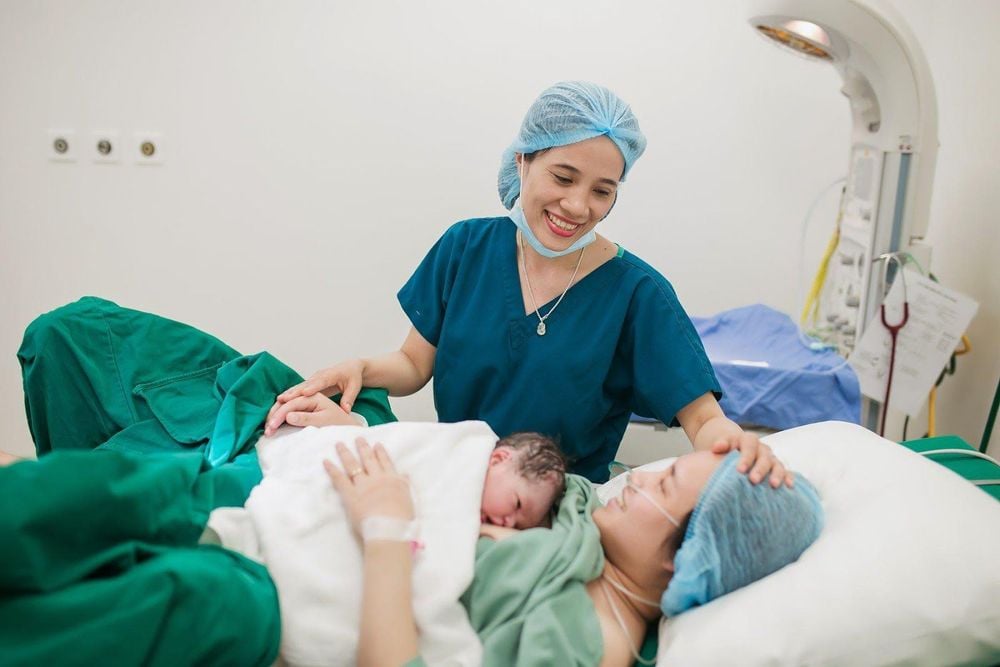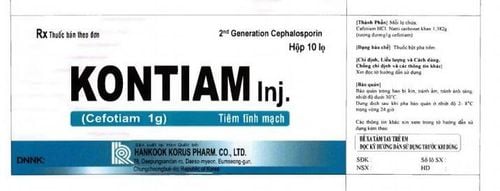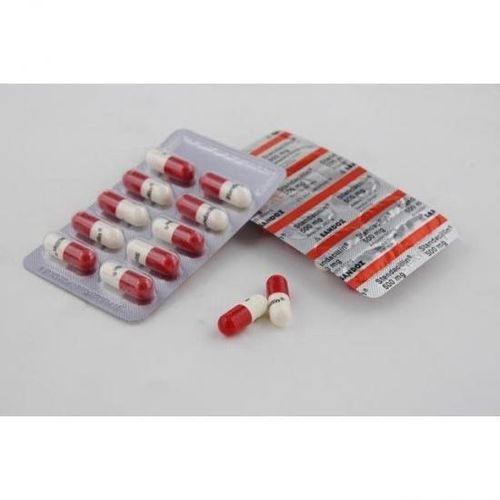This is an automatically translated article.
The article was written by Doctor Pham Do Ngoc Diep - Neonatology Department - Vinmec Times City International Hospital.Neonatal sepsis is a severe infection in infants younger than 28 days old. An infection in your baby's blood can affect any organ or the entire body.
1. Classification of sepsis
Neonatal sepsis is classified as:
Early-onset (up to 3 days postpartum) Late-onset (4th day or more) 1.1 Early-onset sepsis 85% occurs within 24 hours (mean age of onset 6 hours), 5% appeared after 24-48 hours, and a lesser proportion appeared in 48-72 hours. Onset is fastest in premature infants.
Early-onset sepsis associated with maternal microbiology Infection can occur by blood-borne, placental/amniotic transmission of the infected mother, or more commonly, by cervical infection arc (upstream) Early-onset sepsis if baby is exposed to certain bacteria near/during delivery Risk factors for early-onset sepsis include: Early rupture of membranes Maternal infection ( such as chorioamnionitis) Presence of group B hemolytic streptococci (GBS) in the mother's genital tract or urinary tract Preterm birth The risk of sepsis is higher if membranes rupture early before labor amniotic fluid leak 18 hours before birth or if the mother has an infection (especially the urinary tract or the lining of the uterus) The most common types of bacteria that cause sepsis in newborns around birth are Escherichia coli and GBS, which are usually acquired during the birth canal. GBS sepsis is the leading cause of early-onset sepsis. If screening shows GBS or if the mother has previously given birth to a newborn with GBS infection, the mother will be given antibiotics during labor (within 4 hours before delivery). Although the infant may need additional monitoring in the hospital and possibly blood tests to check for infection, antibiotics should only be given to infants when the mother has risk factors for infection and the baby has other conditions. symptoms suggestive of infection

1.2 Late-onset sepsis Newborns can develop late-stage sepsis if they are exposed to certain types of bacteria in the hospital..., in the living environment (after birth). Important risk factors for late-onset sepsis include: Premature birth Long-term use of invasive devices such as prolonged venous nutrition, bladder catheterization Use of assistive devices long-term respiratory support Long-term hospital stay Late-onset sepsis is more likely to be acquired from organisms in the infant's environment
2. Diagnosis of sepsis
Neonatal sepsis can be difficult to identify. Symptoms depend on the cause of the infection. They also depend on the severity of the infection and the organs damaged.
Clinical signs of sepsis are not specific and may include: Changes in body temperature (unstable) Respiratory problems (respiratory failure) Diarrhea Unstable blood sugar Indications: hyper/low blood sugar Poor suckling (No feeding for more than 8 hours) Convulsions Abdominal bloating Vomiting after eating Jaundice and yellow eyes (early postpartum) Hemorrhagic rash Changes in heart rate: fast or slow heart rate depending on depends on the stage of infection. A heart rate above 160 can also be a sign of sepsis, which can appear up to 24 hours before the onset of other signs. Excessive crying Lethargy Change in skin color, pale and patchy skin (purple veins on the skin) Decreased urination - not urinating for more than 12 hours Puffy fontanel Decreased blood pressure If the infant has more than two of the above symptoms then It's important to get treatment right away because sepsis is a rapidly progressing condition, and delaying treatment can cause permanent harm to your baby's growth and development. Your baby will need tests/explorations to diagnose sepsis and rule out other illnesses. These tests may include: Blood culture: This is done to check for bacteria in the blood. Results take a few days, but treatment will begin immediately. This is the primary way to diagnose sepsis. Urine culture: This checks for bacteria in the urinary system. Ear, nose and throat examination: See if there is an infection. Blood tests: Check for signs of infection and the possible effects of sepsis on the kidneys, liver, and blood cells. Cerebrospinal fluid probe: This is done to check for an infection of the brain and spinal cord (meningitis). A small amount of cerebrospinal fluid is tested. X-rays or other imaging tests: For example, chest X-rays are used to check for lung infections.

3. How is sepsis in newborns treated?
Treatment will depend on your baby's symptoms, age and general health. It will also depend on the severity of the child's condition.
Early diagnosis and treatment is the best way to end sepsis. If the doctor thinks it could be sepsis, your child will be given antibiotics right away, even before the test results are available. Once the test results are available, they may change their treatment.
Newborns with sepsis will need to stay in the neonatal intensive care unit (NICU). In the NICU, your baby will be watched very closely. In addition to antibiotics, your child will receive fluids, other medications, oxygen (if needed), nutrition, and breathing support if needed.
4. What are the possible complications of neonatal sepsis?
Neonatal sepsis is life-threatening. It can affect any body system. It often affects more than one system at a time.5. Can neonatal sepsis be prevented?
Neonatal sepsis is unlikely to be completely prevented. But you can reduce your risk with the following:Prenatal care/monitoring can detect and treat many maternal problems, putting the newborn at risk of sepsis. Giving birth at medical facilities with good care/support conditions for the baby at birth. Regularly wash your hands before touching your baby and after taking care of your baby's hygiene. Limit your child's exposure to many strangers. Take the child to early examination and early treatment.

Vinmec International General Hospital is one of the hospitals that not only ensures professional quality with a team of leading medical doctors, a system of modern equipment and technology. The hospital provides comprehensive and professional medical examination, consultation and treatment services, with a civilized, polite, safe and sterile medical examination and treatment space.
Please dial HOTLINE for more information or register for an appointment HERE. Download MyVinmec app to make appointments faster and to manage your bookings easily.














